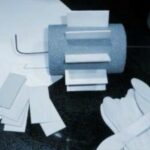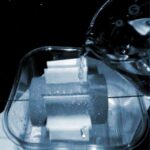Overview
STEM careers
Topic
Time
Materials
Per Class:
|
Per Group of 2-3 Students:
|
Instructions
Students use everyday objects to design a watermill with blades that rotate through water for at least 3 minutes.

- Divide students into groups. Describe the challenge and distribute materials. Give students these constraints:In addition to rotating for at least 3 minutes, the watermill can’t fall apart!
- Teams can request more of any materials, up to two sets of materials per team.
- Teams can trade with other teams as much as they want to in order to develop their list of ideal parts.
- Discuss the pictures of watermills and explain how they work.
- Instruct teams to sketch their ideas and plan what materials they want to use.

- Tell students to begin construction. Remind them as needed that they can ask for more materials and then trade for other materials.
- Test each watermill in the basin or sink. Students have to ensure that their watermill doesn’t move from a central place or roll onto one side.
- As a class, discuss which watermills were most successful and what made them so.
Guiding questions
- How sturdy do the blades need to be in order to hold up when water is poured on them for three minutes?
- How far do the blades need to stick out in order to be effective?
- What materials would make a good base so that the watermill stays steady and upright?
Engineering & science connections
- Watermill: A structure that uses a water wheel or turbine to drive a process such as grinding flour, producing lumber, or shaping metal. Hydroelectric plants are watermills that generate electricity. Greek and Roman engineers from thousands of years ago invented watermills to grind grain.
- To power a watermill, engineers lay pipe or channels to divert water from a river or pond to the water wheel. The water’s force pushes the blades of the wheel, which turns an axle, which drives whatever machinery is attached to it. After the water runs over the wheel, it exits the watermill and is returned to its source.
- Engineers have developed small-scale water turbines to produce electricity for personal use. Each unit is about 18″ x 18″, and when placed in a year-round stream can produce enough electricity for a single home. In contrast, the largest electricity-producing dam in the world is the Three Gorges Dam in China, which can produce 22,500 MW, or enough electricity for about 20 million homes!
Provided by TryEngineering.org


0 Comments